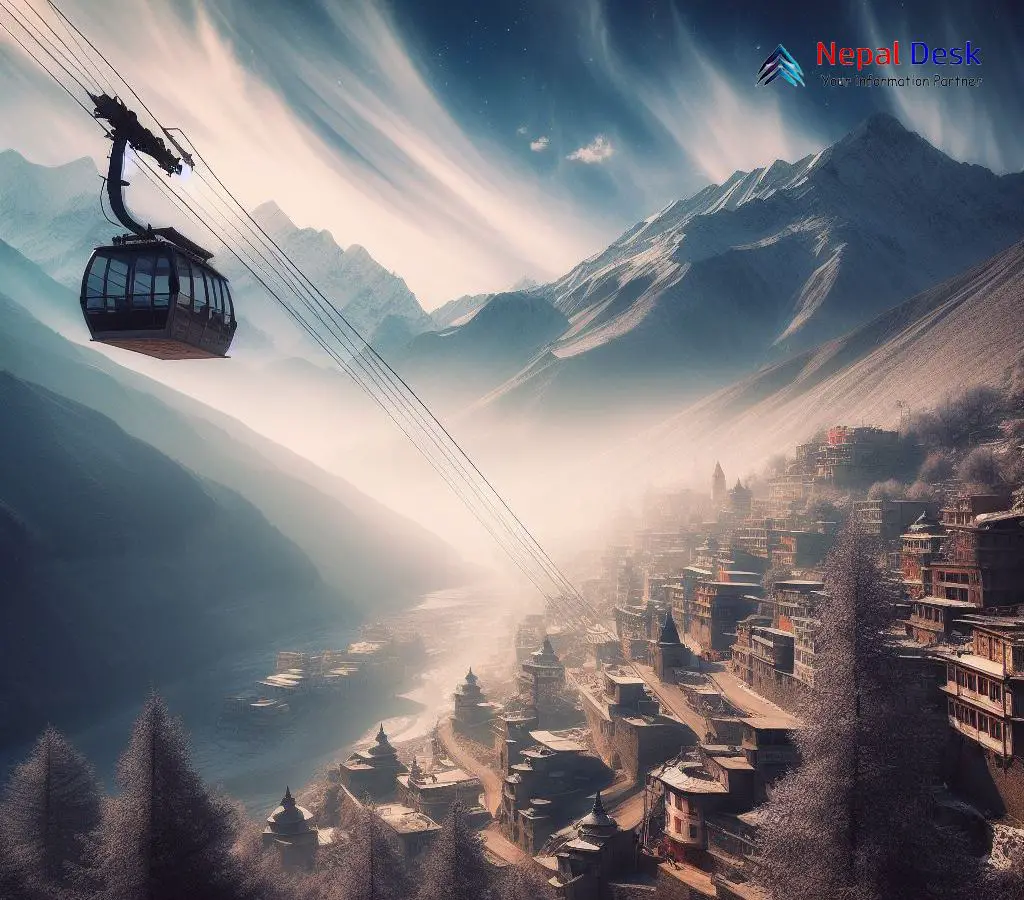World's Longest Cable Car Planned for Muktinath, Nepal
Published Date

Published Date
Nepal's and World's Record-Breaking Cable Car: Muktinath's 80km project underway, connecting sacred sites and offering stunning views.
⏱ 3 min read
An agreement has been reached to build the world's longest cable car in Muktinath, Nepal. The Hyderabad-based Indian company, KE and R Engineering Limited will not only construct the project but also invest in it, following the Engineering Procurement and Construction (EPC) model. Muktinath Development Manager Shridhar Sapkota and KE and R Chairman Guru Pravir Kallal have both signed the agreement.
The Muktinath cable car project marks Nepal's first major venture using the EPC model - a method that was introduced by the government two years ago. Spanning 80 kilometers, this ambitious project is estimated to cost 55 billion Nepalese Rupees. KE and R Engineering will be investing 80 percent of the total amount, equivalent to 44 billion Nepalese Rupees. Two percent of the project shares will go to locals affected by its construction, seven percent to the general public, and 11 percent to the founders. The construction duration is expected to be around four years.
While Muktinath's Detailed Project Report (DPR) has been completed, the Environmental Impact Assessment (EIA) work is nearing its final phase. About 90 percent of the required land has already been acquired for the project.
Nepal's government emphasized the simplification of this cable car project in last year's budget and submitted its DPR for approval to relevant authorities. With 19 stations designed along its route, eight of them will require passengers to disembark if they wish to proceed further, while another five stations will only permit disembarkation in emergency situations.
Stretching across 80.15 kilometers and featuring 776 gondolas, the Muktinath cable car system will hold an altitude range of 1,000 to 3,700 meters. Resorts are planned for all stations on this expansive network with an estimated capacity for transporting up to 3.6 million travelers annually.
Cable cars are aerial, cable-based vehicles operating on a gondola lift system. Nepal's first cable car service was inaugurated in 1998 - the Manakamana Cable Car, which covered a distance of 2.8 kilometers. Now several other cable car services operate throughout the country, including Chandragiri Cable Car, Kalinchowk Cable Car, Annapurna Cable Car, Maula Kali Cable Car, and Lumbini Cable Car.
The Muktinath temple is situated at the base of Thorong La mountain pass within the Mustang District of Nepal. Revered by both Hindus and Buddhists as a sacred site, this temple is considered one of the world's highest temples at 3,800 meters (12,467 feet) above sea level. Muktinath lies amongst 108 Divya Desams in Hinduism and is the only such temple positioned outside of India.
The introduction of cable cars has revolutionized tourist access to shrines and temples on hilltops across Nepal, often providing spectacular views. These services have also contributed positively to local economies by attracting more tourists and creating jobs in the hospitality and retail sectors. Besides being an environment-friendly mode of transportation that produces no pollutants or greenhouse gases, cable cars are an ideal choice for regions with delicate ecosystems and natural habitats.
